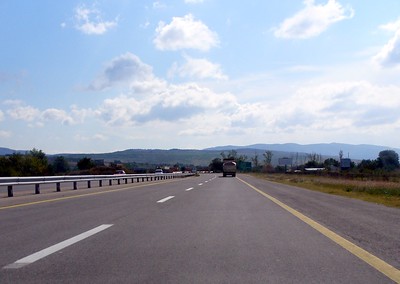Have you ever heard someone say that they enjoyed living on campus without a car in their college days? Or someone raving about spending a week at Disney World or some fancy European city? Similarly, you might wonder why it is fun going downtown or traveling through a dense, walkable neighborhood.
Let’s do a quick test. Take a look at the two pictures below. Which do you find more interesting?


Most likely, you are drawn to the second picture. If you are really just wondering what it is, it’s called the Sierpinski Carpet Fractal. Our brains are really good at identifying patterns in a sea of information. This is likely an evolutionary holdover from our past where humans were constantly looking for food and predators amongst the vegetation. There is an interesting Snake Detection Theory that basically says primates (including humans) developed the vision that we have today to escape predation from snakes.
But snakes aside, let’s get back to travel. Since our brains are drawn to dense visual information, strolling around a bustling downtown feels interesting and enjoyable. There are cafes, store fronts, and people’s faces to constantly keep our attention. Walking on college campus has a similar effect. Seeing people causes pattern-detecting-brain-subroutines to start firing neurons with a positive feeling. Of course, over time, the perceived “visual interest value” of a store front goes down if you travel by it every day, but it might still remain elevated due to other variables. You can look inside the windows to see what’s new or what the daily special is at your local coffee shop. Seeing new faces on the street never gets old though – it’s just our nature.
Now, let’s contrast walking in a visually dense downtown or college campus to a typical driving commute. Most likely it looks something like the picture below: an expansive gray road or highway filling your field of vision with any surrounding details zooming by on the margins.

Over time, the “visual interest value” of a road or highway is close to zero. You might feel this when you mentally zone out during a commute and feel like you are on autopilot. Some people, especially car aficionados, might argue that looking at other cars on the road is fun. However, we didn’t evolve with cars, so our brains likely don’t fire as many pattern recognition chains as it would for other environmental factors. In most cases, you are focused on important driving logistics such as other cars, merging lanes, highway exits, etc. This helps you get safely from point A to point B but doesn’t offer the opportunity for visual stimulation or spontaneous stops along the way.
So, is biking more like walking or driving? It’s somewhere between those two modes of transportation. Your experience will vary depending on your biking route and style. If you are just focused on getting to your destination on a familiar stretch of trail or busy road, then the experience will have less “visual interest value” like a car. That is also the case if you are maxing out speed on an e-bike. On the other hand, if you take it easy, go slow, and intentionally plan your route through neighborhoods or downtown, then you’ll find your commute to be pleasant and similar to walking. You might also take the opportunity to stop at your favorite store or park along the way. That, of course, is only possible if you have time and interest to do so.
So, there you have it, folks. Biking or walking can be as enjoyable as a college campus, Disney World, or a European city even in the American suburbs. Just be sure that you take it slow and stop for a coffee shop detour every once in a while.
Leave a Reply